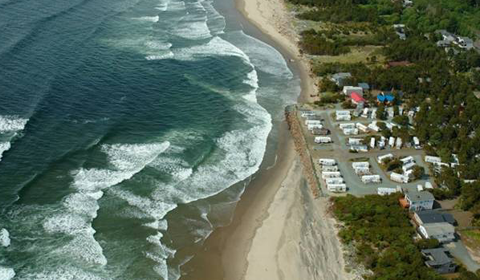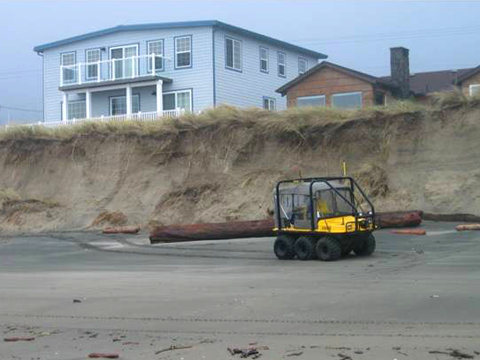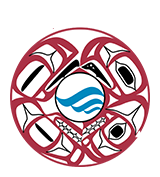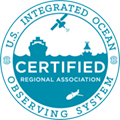Coastal Hazards
The Pacific Northwest coasts of Oregon and Washington are some of the most dynamic coastal landscapes in North America, evident by its long sandy beaches, shear coastal cliffs, dramatic headlands and vistas, and ultimately the power of the Pacific Ocean that serves to erode and change the shape of the coast.

It is these qualities along with its various natural resources, including timber and fishing that have drawn people to live along its narrow shores. However, the creation of this beauty comes at a price. Flooding and erosion from storms, seasonal changes in beach sand, human effects such as the building of jetties and engineering structures, and the coupled effects of an off-shore earthquake and tsunami are just a few forces that shape the landscape and create hazards. Over time, these hazards are gradually being compounded, in part due to changes in storm tracks, wave statistics, and sea level, as well as the degree of development in recent decades, enhanced to some extent by planning and land-use development practices that have not fully considered the coastal geologic hazards.

Areas of Emphasis
Maritime Operations |
Coastal Hazards |
Fisheries & Marine Life |
Marine Ecosystems |
Weather & Climate |
Related Topics
Coastal & Marine Spatial Planning
Honshu Earthquake and Tsunami 2011
An informational page about the magnitude 9.0 earthquake that occurred off the eastern coast of Japan on March 11, 2011, and the resulting tsunami that hit the US Pacific Northwest 9 hours later.
Marine Debris
Related NANOOS Products
Pacific Northwest Beach and Shoreline Mapping
Beach Cross-section and time-series plots of coastal change occuring on the Oregon coast due to the effects of storms, El Niños, changes in beach sediment supply, and sea level rise.
Southwest Washington Coastal Mapping
Beach cross-sections, time-series plots of coastal change, and information on beach sediments for the Columbia River littoral cell (Tillamook Head, Oregon to Pt. Grenville, Washington).
Coastal Processes in the Pacific Northwest
Information on beach dynamics, waves, storms, and climate change that affect the PNW beaches, shorelines, and hazards.
Tsunami Evacuation Zones on the Washington and Oregon Coasts
Tsunami evacuation maps resutling from potentially great (magintude 9+) earthquakes on the Cascadia subduction zone.
NANOOS Visualization System (NVS)
The NANOOS Visualization System (NVS) provides easy access to forecast and observation data across a wide range of assets such as buoys, shore and land stations, high-frequency radar, and satellites.
Wave Forecasts
Significant Wave Height & Direction and Wind Speed & Direction forecasts for the Pacific NW. Forecasts are updated every 6 hours starting at 13:00 PDT.
Ocean Currents
Daily average ocean surface currents off the Oregon coast. These surface currents are measured with a radio transmitter and receiver using an instrument, the SeaSonde, made by CODAR Ocean Sensors.
NANOOS members involved in this effort include:
Oregon Dept. of Geology & Mineral Industries
| National Observing System Partners Alliance for Coastal Technologies (ACT) Southeastern Universities Research Association (SURA) Integrated Ocean Observing System IOOS | |||||||

